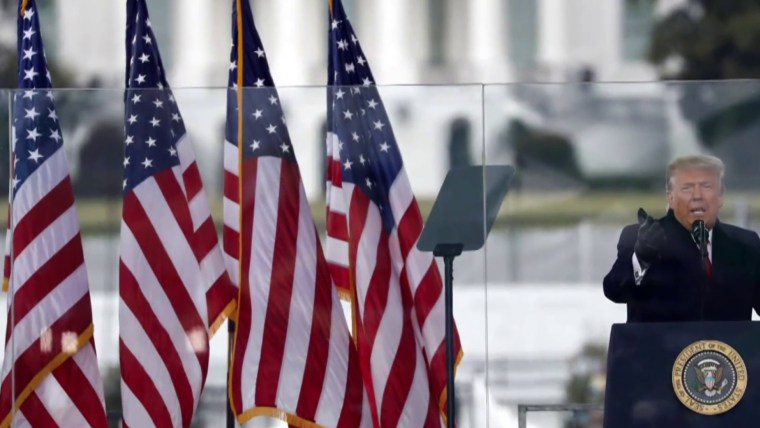In Donald Trump’s first year in office, Sarah Huckabee Sanders insisted that he had never “promoted or encouraged violence.” Even at the time, it was a difficult line to take seriously.
The Washington Post noted soon after that the claim was “laughable,” adding: “Even if you don’t believe Trump has technically incited violence (which he has been sued for), he clearly nodded toward violence at his campaign rallies. Sometimes it was veiled; other times it was unmistakable. Sometimes he was talking about self-defense, but it was clear he was advocating for a ‘form of violence.’”
Even Republican Sen. Ted Cruz of Texas explained in 2016 that Trump had “a consistent pattern of inciting violence.”
While in office, Trump added to the pattern on too many occasions — culminating in the Jan. 6 attack on the U.S. Capitol, which was an insurrectionist riot the outgoing president helped incite.
It was against this backdrop that the Republican used his social media platform this week to promote a message from a pseudonymous contributor. The missive read:
“Then they will have to figure out how to fight 80,000,000 + it’s not going to happen again. People my age and old will physically fight for him this time. What we got to lose ? I’ll donate the rest of my time here on this planet to do it. And I know many many others who feel the same. They got my 6 and we Are Locked and LOADED.”
As a rule, Trump tends to rely on more oblique rhetoric. Last September, for example, while whining about investigations into his scandals, the former president wrote that he didn’t know “how much more our Country will be willing to withstand.” He used similar rhetoric in November. A month later, he added, “THE PEOPLE OF THIS COUNTRY AREN’T GOING TO TAKE IT MUCH LONGER.”
Around the same time, conservative host Hugh Hewitt raised the prospect of a possible criminal indictment. “I think if it happened, I think you’d have problems in this country the likes of which perhaps we’ve never seen before,” Trump said. “I don’t think the people of the United States would stand for it. ... I think they’d have big problems, big problems. I just don’t think they’d stand for it.”
Note, Trump didn’t come right out and explicitly say his radicalized followers would commit acts of violence. That certainly appeared to be the intended subtext, and there was no great mystery about his meaning, but the former president showed at least some rhetorical restraint.
This week, however, the subtext was text. The Republican thought it’d be a good idea to highlight a message from a supporter who threatened to “physically fight” for Trump. The same missive concluded with a “locked and loaded” warning.
For those unfamiliar with online practices, some caveats are probably in order. Spend enough time on social media and you’re bound to run into some variation of a common expression: “Retweets do not equal endorsements.” The idea is fairly straightforward: Just because someone is promoting a missive does not mean that person necessarily agrees with the entirety of the message. Sometimes, people end up promoting content on Twitter, for example, simply because they want their followers to be aware of it.
I mention this because, in this instance, Trump effectively retweeted the “physically fight” message, but he didn’t say he agreed with it. His allies might cling to this detail as somehow exculpatory.
But let’s not play games or be needlessly coy: Given the larger context and everything we know about the former president, he didn’t promote the message because he found it unsettling or ridiculous. He appears to have promoted the missive because he liked it.
What’s more, there is every reason to be concerned about the dangers poised by the Republican’s promotion of such incendiary rhetoric. A Washington Post analysis added yesterday, “There is now no denying that such language, even if you somehow regard Trump’s intentions as innocent, can lead to a very dark place.”
If Trump is concerned about such consequences, he’s hiding his fears well.

